Ask Ethan: Can the universe be infinite?

Logarithmic image of the observable universe in the artist's view
13.8 billion years ago, the universe began with a hot big bang. Since then, it has expanded and cooled, right up to today. From our point of view, we can observe the Universe within a radius of 46 billion years due to the limitation of the speed of light and the expansion of the Universe. And although this distance is huge, it certainly is. But this is only the part that we see. What is beyond its borders, and is it possible that there is infinity? Adam Stevens wants to know:
What do you think about the infinity of the universe? Many cosmologists have told me that the infinity of the universe is not proven. And how can this be proved empirically?
First, we can learn more than what we see within 46 billion light years.
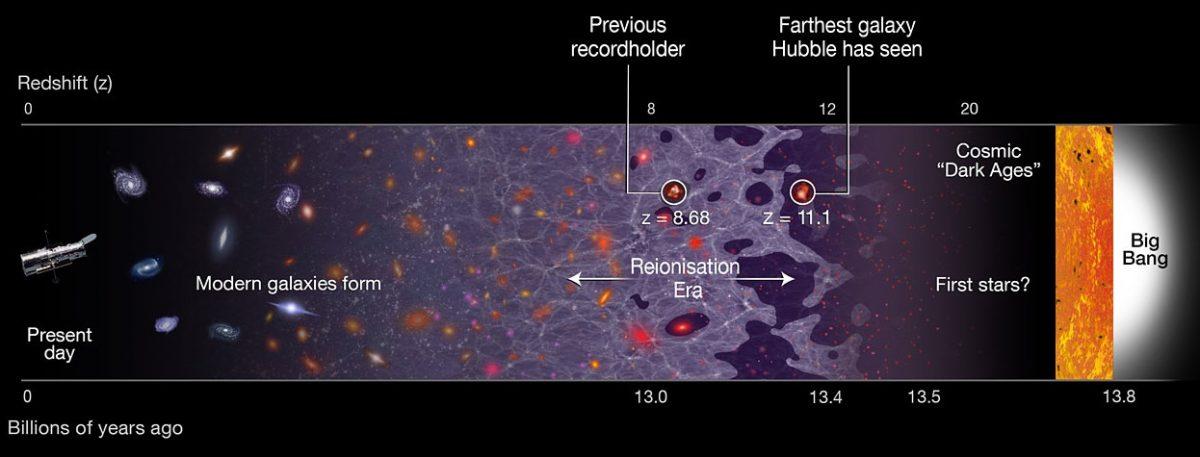
Observing objects that are farther away from us, we see them more deeply immersed in the past.
')
The further we look in any direction, the further we look into the depths of time. The nearest galaxy, located 2.5 million light years away, is visible to us as it was 2.5 million years ago, since the light from which it travels to our eyes from the moment it is emitted takes exactly that time. More distant galaxies are visible to us as they were tens of millions, hundreds of millions or even billions of years ago. Looking even further, we see the light of the Universe from the time when it was younger. So if we look at the light emitted 13.8 billion years ago, the relic of the Big Bang, we will see relic radiation.

Only a few hundred microns separate the hottest areas from the coldest, but the correlation of fluctuations in scale and strength contains a wealth of information about the early Universe.
The pattern of fluctuations is extremely confusing, it contains different average temperatures at different angular scales. It also encrypts a huge amount of information about the Universe, including the striking fact: the curvature of space, as far as we can tell, is absent, that is, it is flat. If space had a positive curvature, as if we lived on the surface of a four-dimensional sphere, we would see the convergence of distant rays of light. If he had a negative curvature, as on the surface of a four-dimensional saddle, we would see how the distant rays of light diverge. Instead, the rays of light move as they moved, and the fluctuations tell us about the ideal plane.

The magnitude of the temperature of hot and cold areas, and their scale, tell us about the curvature of the universe. As far as we can judge, it is flat.
From the set of data on the background radiation and large-scale structures of the Universe (accessible through the study of baryon acoustic oscillations), we can conclude that if the Universe is finite and closes in on itself, it should be at least 250 times larger than the part we can see. Since we live in three dimensions, an increase in radius of 250 times means an increase in volume of 250 3 times, or 15 million times more space. But this is still not an infinite volume. The minimum estimate of the size of the universe, 11 trillion light years in all directions, which is terribly much, but still not infinite.
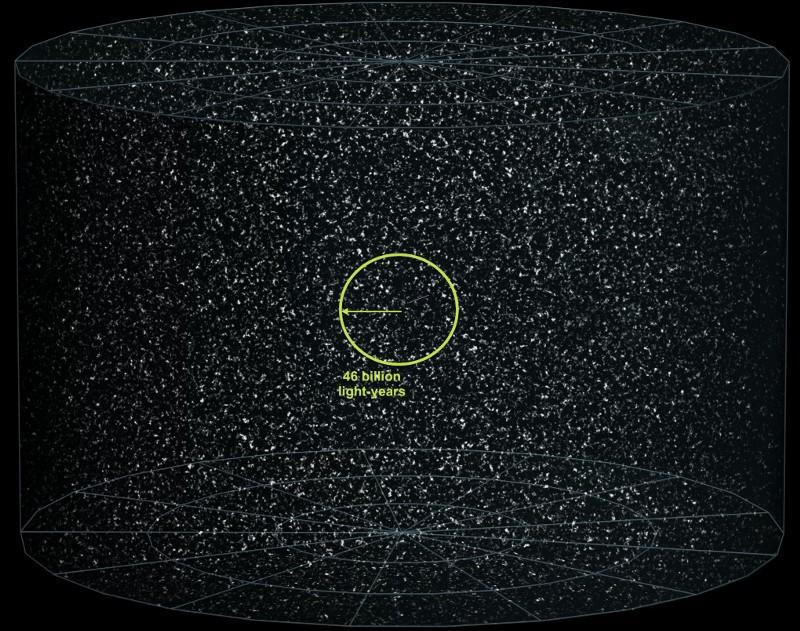
The Universe we are observing is 46 billion light-years in all directions, but beyond this boundary there is necessarily something else.
There is reason to believe that it is even more. Hot Big Bang may mark the beginning of the observable universe, but not the birth of space and time. Before the Big Bang, the universe experienced a period of cosmic inflation. Instead of being filled with matter and radiation, and being hot, the Universe was:
• was filled with energy inherent in the space itself,
• expanded at an exponential rate
• created a new space so quickly that the smallest physical size, the Planck length, stretched to the size of the Universe observed today every 10 -32 seconds.
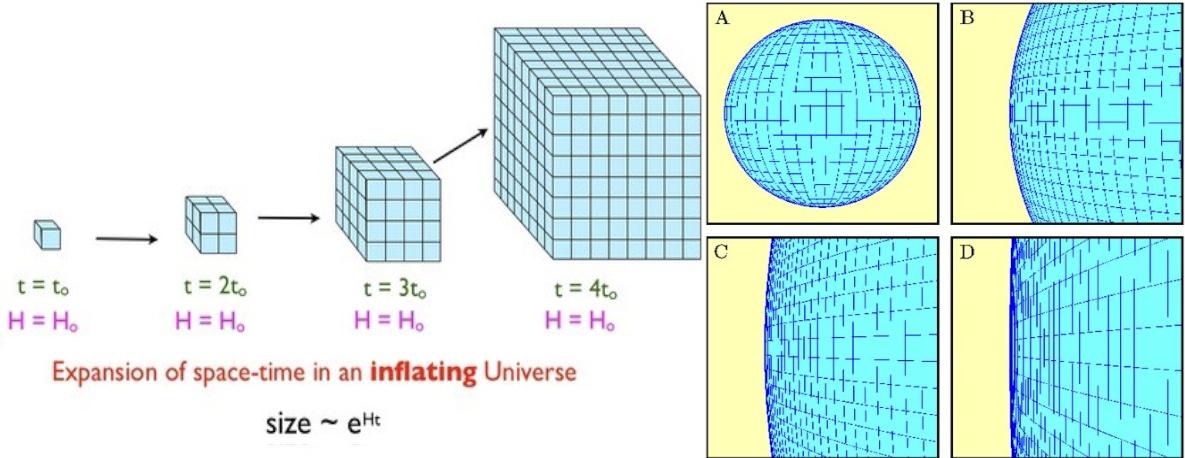
Inflation leads to an exponential growth of space, because of which the existed curved space may seem flat.
In our region of the universe, inflation is really over. But there are several questions, the answers to which are unknown to us, which have a huge influence on the size of the Universe and its finiteness or infinity.
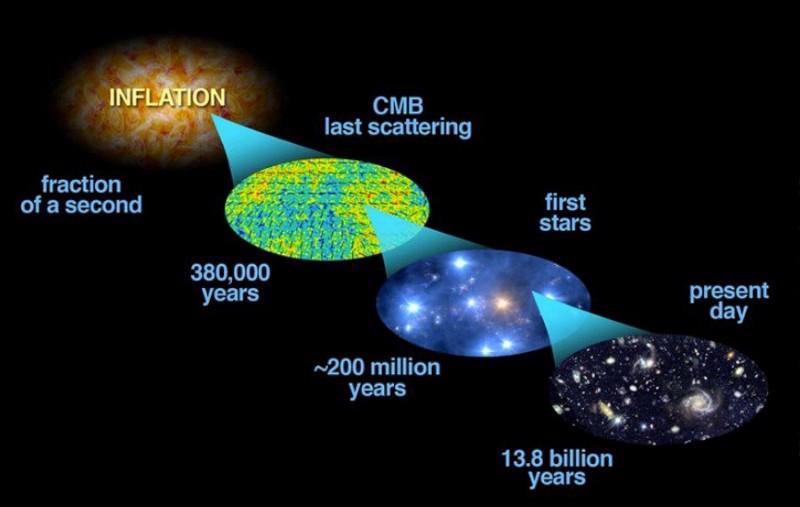
Inflation has prepared everything for the Big Bang and spawned the observable Universe, but only a fraction of a second of the impact of inflation on our Universe is available for measurement.
1) What size was the site of the universe after inflation that gave rise to our hot Big Bang? Observing the present Universe and the homogeneity of the afterglow of the Big Bang, the proximity of the Universe to the plane, fluctuations stretching across the Universe on all scales, etc., etc., we can learn a great deal. We can calculate the upper limit of the energy scale on which inflation occurred, how much inflation increased the Universe, the lower limit on the duration of inflation. But that pocket of the expanding universe, from which our part originated, could greatly exceed the lower limit! It can be hundreds, millions, googol times more than what we can observe - or to be truly infinite. Without the ability to observe more than is available to us now, we will not get enough information to answer this question.

Inflation ends (at the top) when the ball goes down into the valley. But the inflationary field is quantum (in the middle), and stretches in time. In many parts of space (purple, red, blue) inflation will end, and in many others (green, blue) it will continue, perhaps to infinity (below)
2) Is the idea of "eternal inflation" correct? If you consider the possibility that inflation is a quantum field, then at any moment of exponential expansion there is a probability of ending inflation, which will lead to the Big Bang, and the likelihood that inflation will continue, creating more and more space. Such calculations are available to us (within certain assumptions), and they lead to the conclusion: if we need enough inflation before creating the observable Universe, then inflation will always create even more space that will continue to expand, unlike the areas where it will end and there will be a big bang. And although our observable universe could appear after the end of inflation in our region 13.8 billion years ago, there are regions where inflation continues — and it creates more and more space, and it generates more and more Big Bangs — to this day. This idea is known as perpetual inflation, and it is generally accepted in the physical community. So what size is the entire unobservable Universe today?
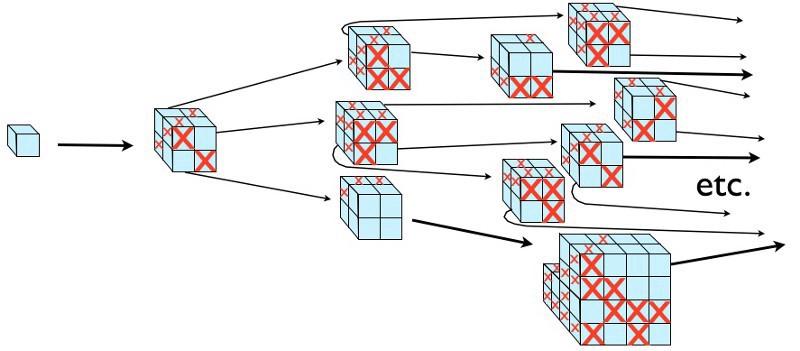
Although inflation could have ended in more than half of all plots at any time (marked with red X), a sufficient number of plots continue to expand forever, with the result that inflation continues forever, despite the fact that no two universes will ever collide
3) How long did inflation last until it ended, and the Big Bang occurred? We only have access to the Universe, created by the end of inflation and our hot Big Bang. We know that inflation should have continued for at least 10 -32 seconds, but, most likely, it went longer. But how much? Seconds? Years? Billions of years? Infinitely? Has the universe always been subject to inflation? Did inflation have a beginning? Did it follow from a previous state that lasted forever? Or perhaps space and time came from nothing a limited time ago? There are many possibilities, but at the moment the answer is impossible to verify.

The huge number of individual regions where the Big Bang took place is divided by areas of space expanding in infinite inflation. We do not know how to check, measure or access what lies outside the observable universe.
Judging by the best observations, we know that the Universe is much larger than the observable part. We suspect that beyond these limits even more of the Universe is spread, the same as ours, with the same laws of physics, types of structures (stars, galaxies, clusters, filaments, voids, etc.), and with the same chances for a complex a life. The size of the bubble in which inflation has ended must be finite, and in a larger, expanding space-time, an exponentially huge number of such bubbles must be contained. But, let the whole Universe, or the Multiverse, be so unimaginably huge, it may not be infinite. In fact, if inflation did not last indefinitely, the universe must be finite.
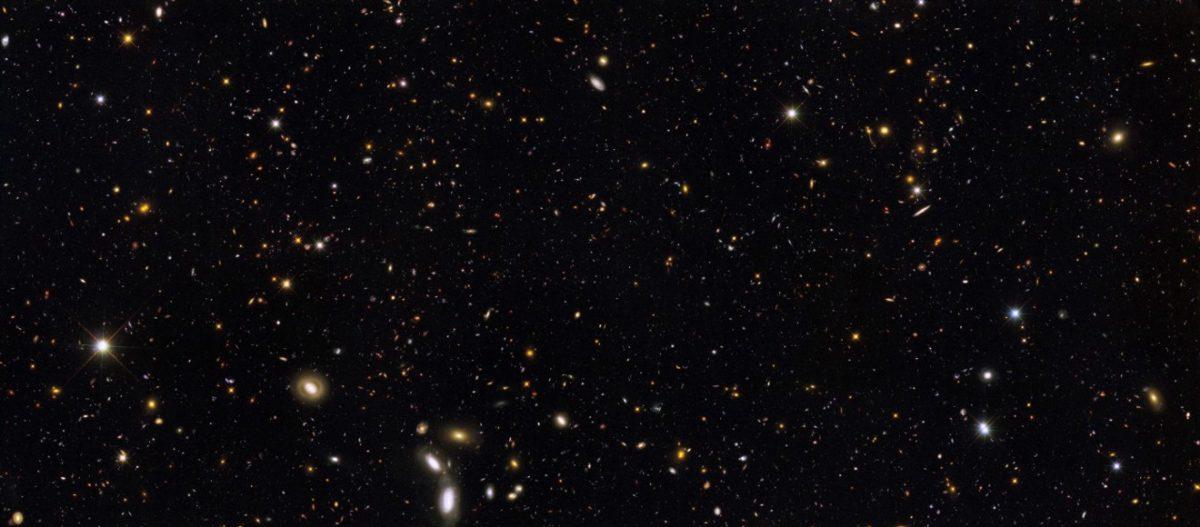
The part of the Universe that we observe is huge, but this is only a tiny part of the whole existing
But the biggest problem is that we have access only to the information contained within the observable part of the Universe, in these 46 billion light years in all directions. The answer to the largest of the questions, whether the universe is finite or infinite, can be encoded in the Universe, but we cannot access a large enough part of it to find out. Until we either resolve this issue, or invent a clever way to expand the possibilities of physics, all this will be in the area of possibilities.
Ethan Siegel - astrophysicist, popularizer of science, blog Starts With A Bang! He wrote the books Beyond The Galaxy , and Treknologiya: Star Trek Science [ Treknology ].
Source: https://habr.com/ru/post/370735/
All Articles